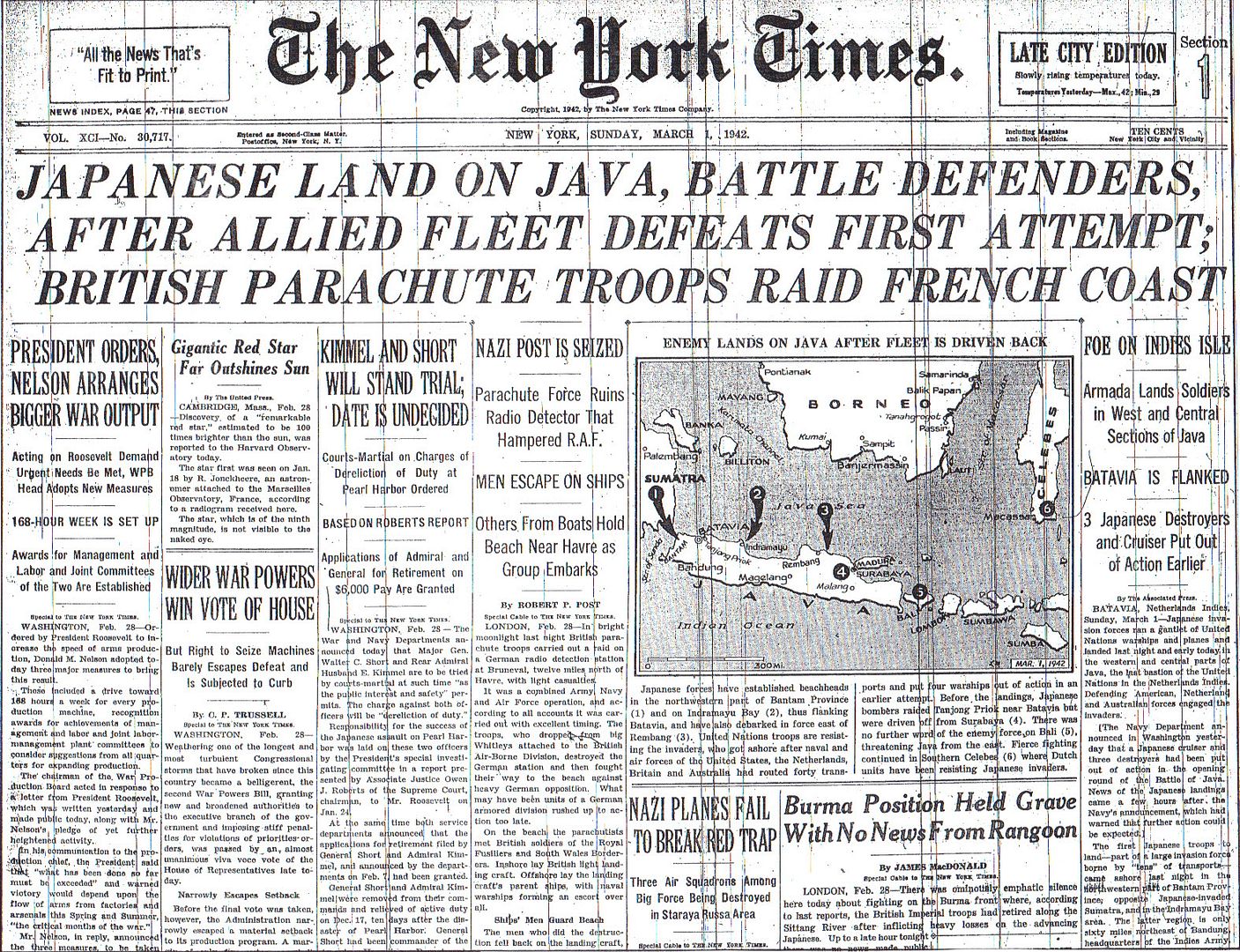
Posted on 03/01/2012 4:31:46 AM PST by Homer_J_Simpson

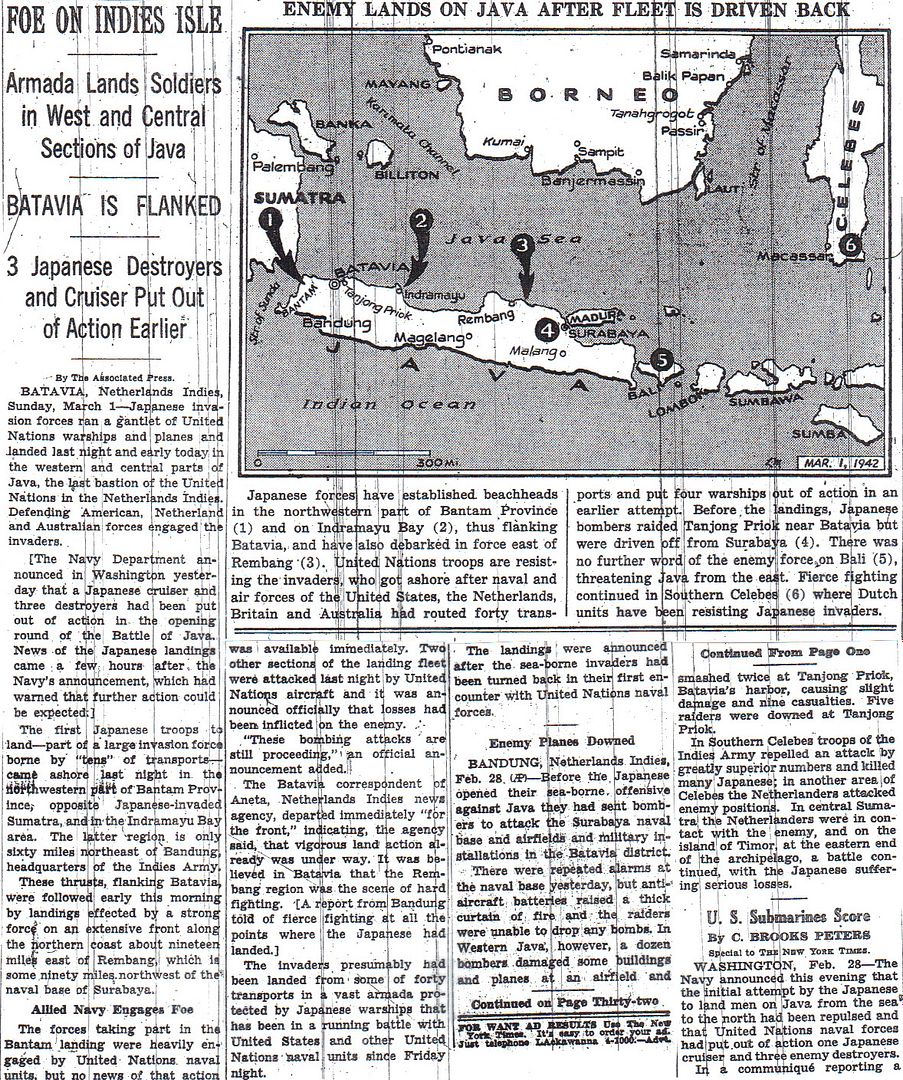
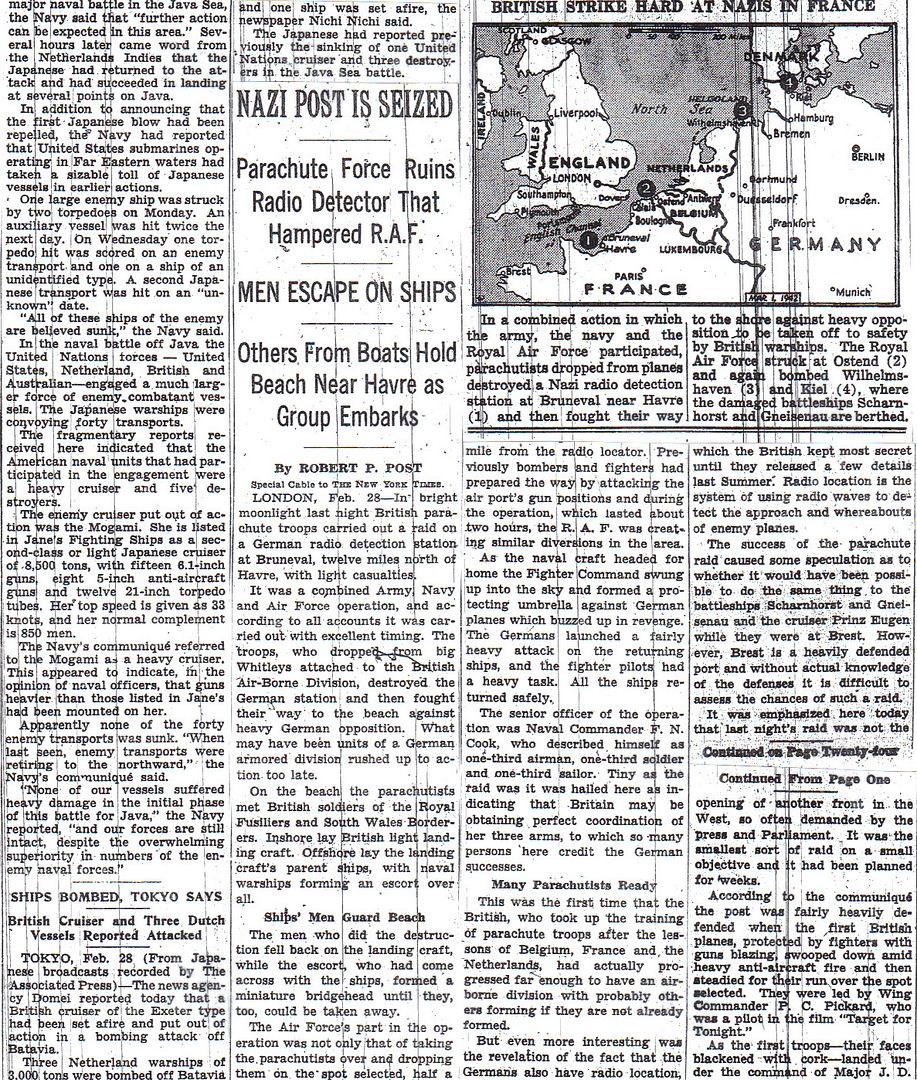
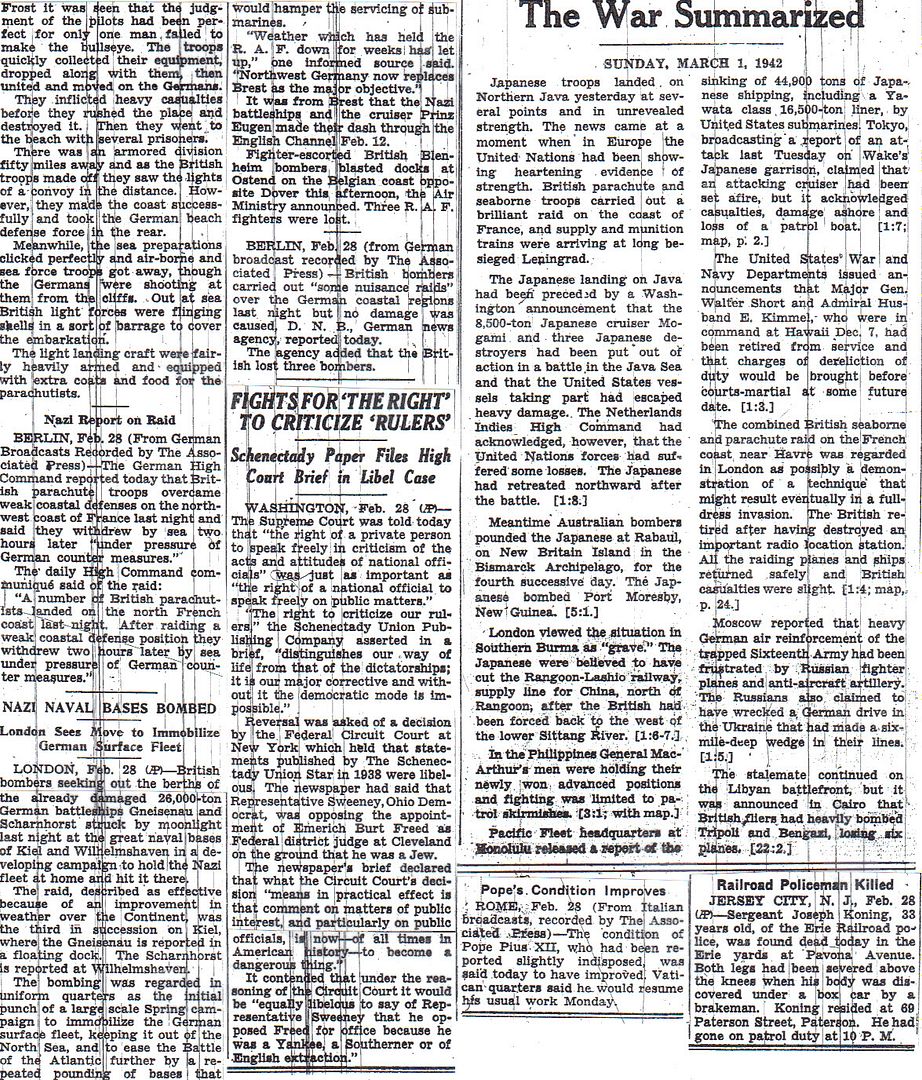
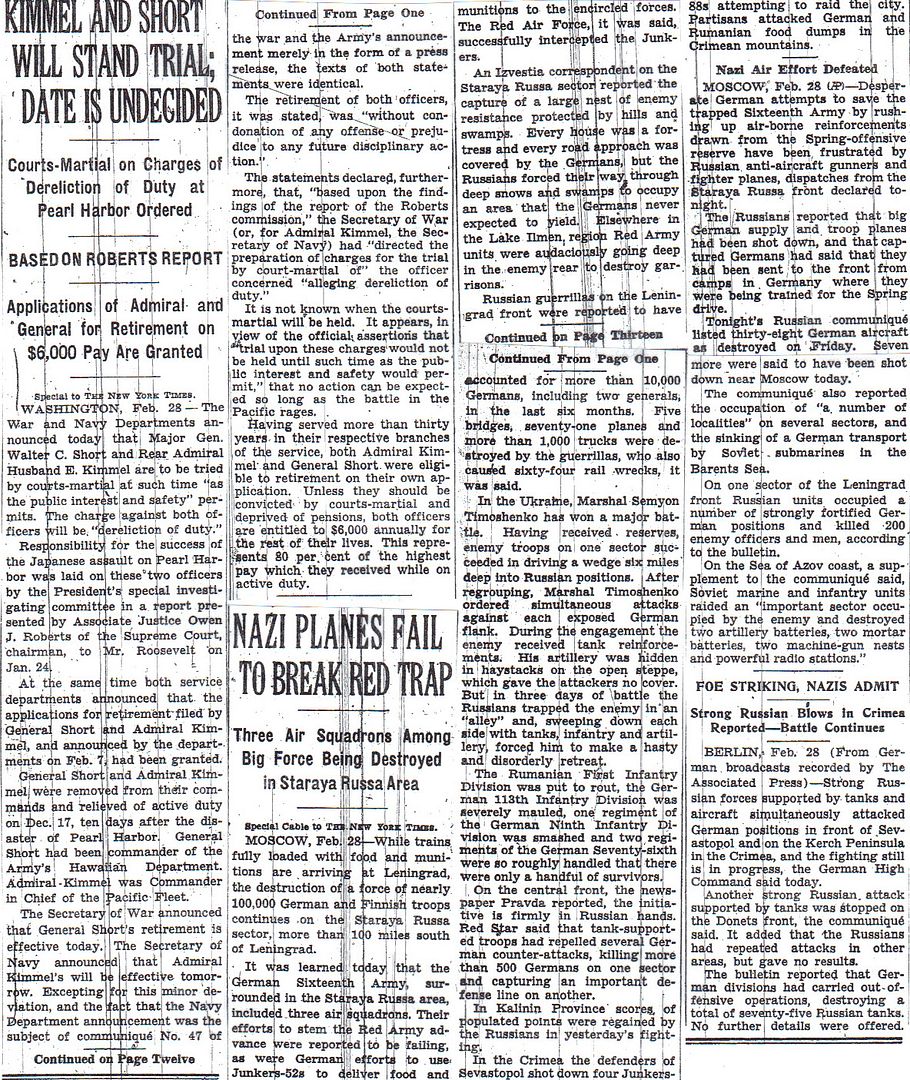
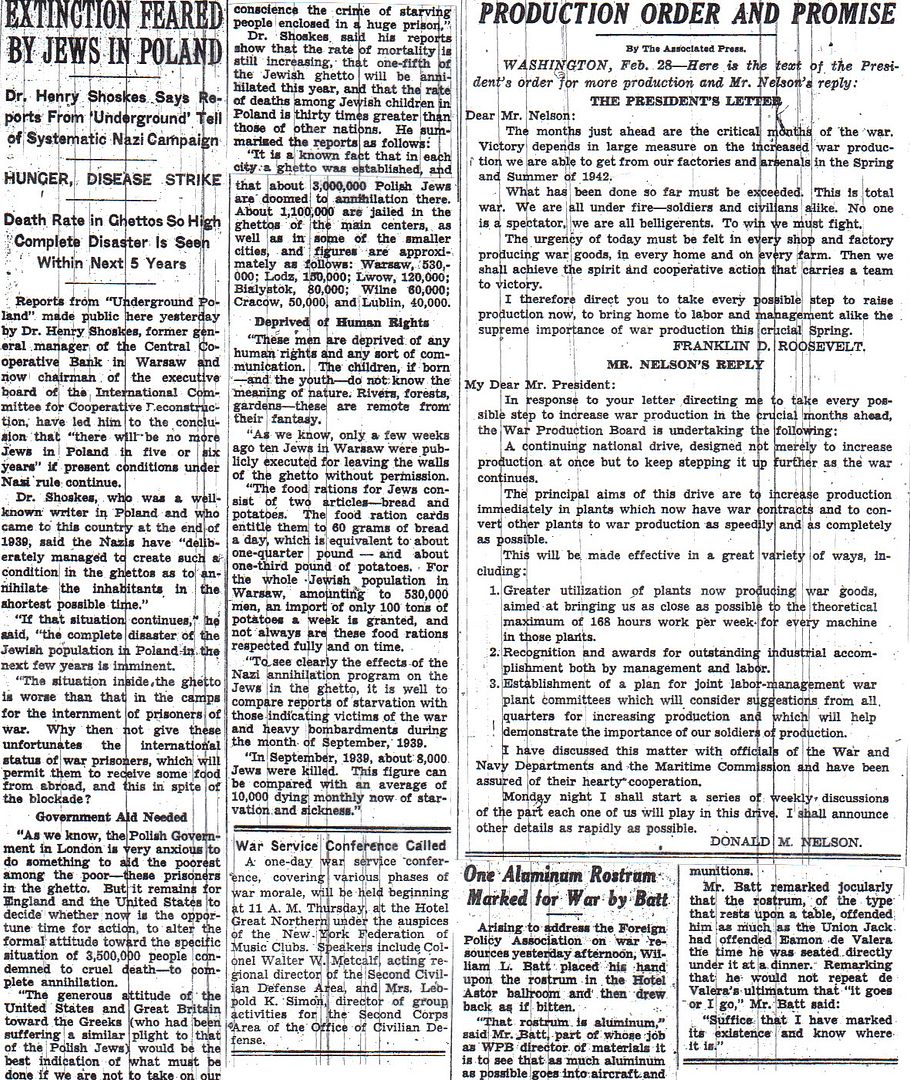
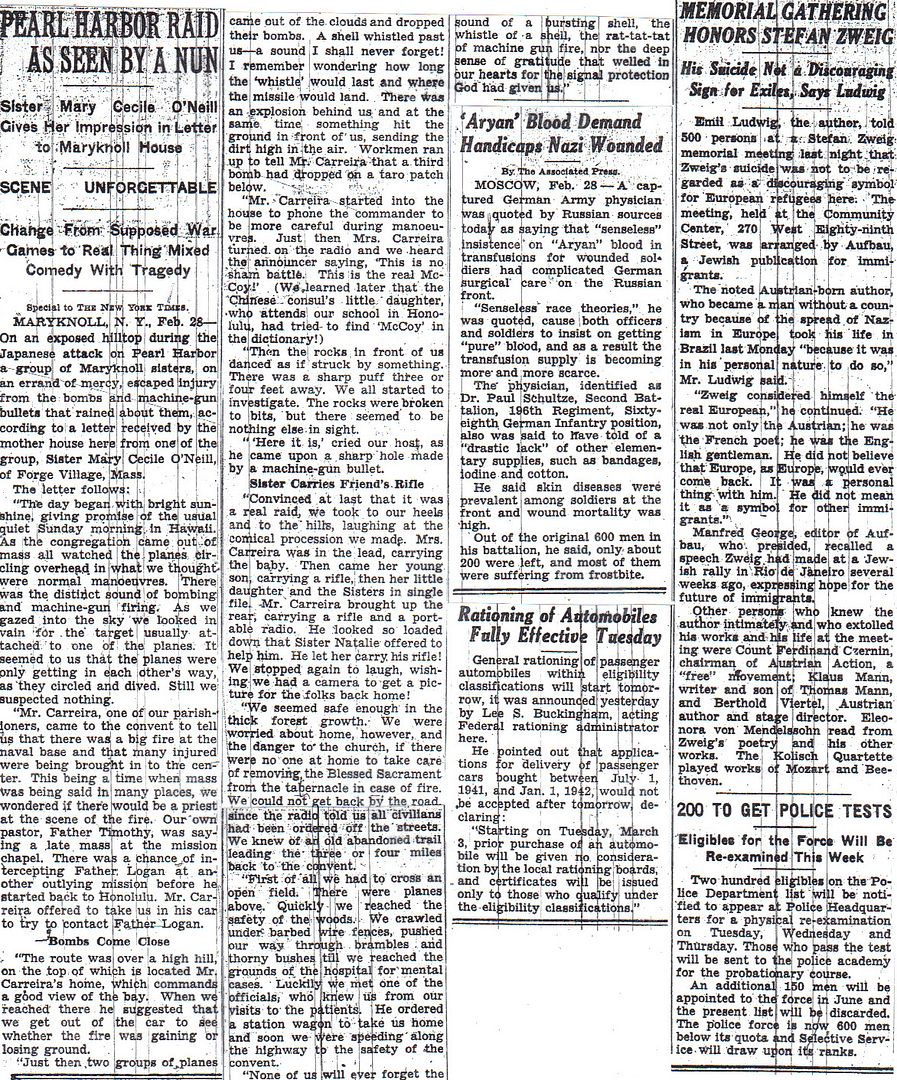
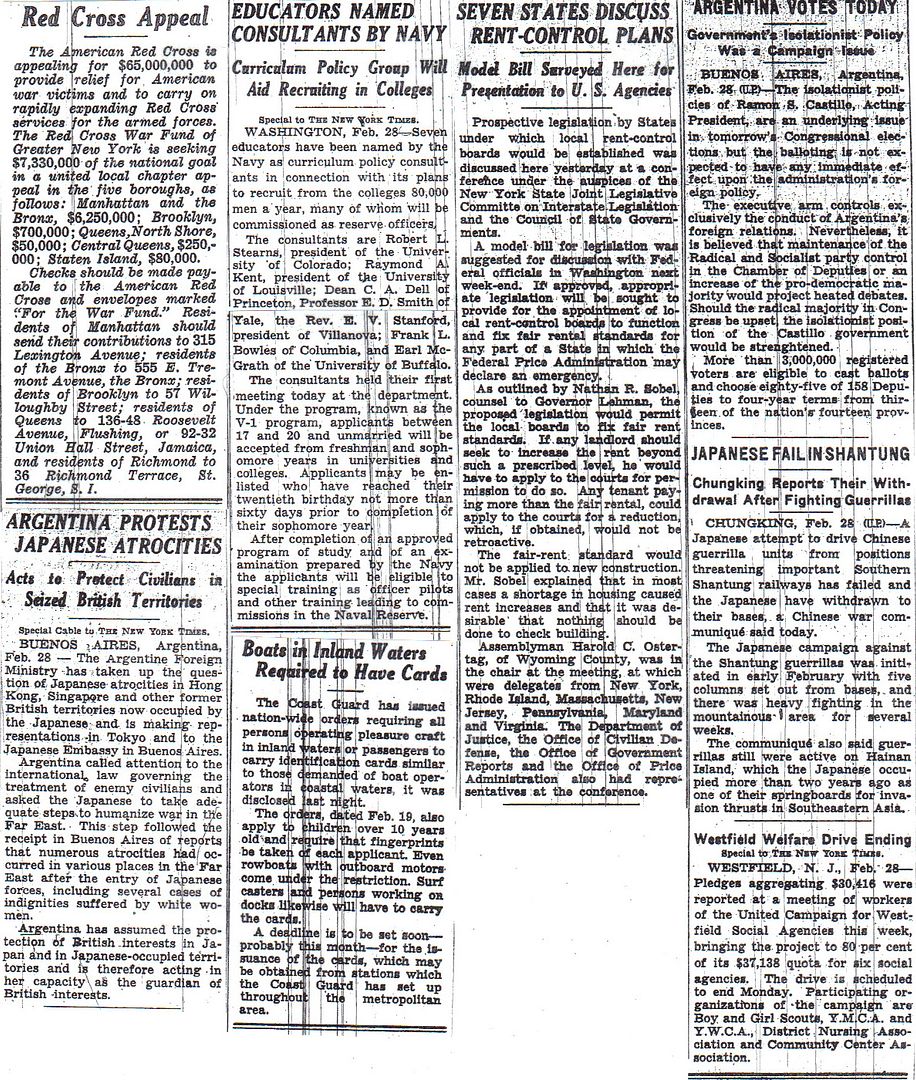
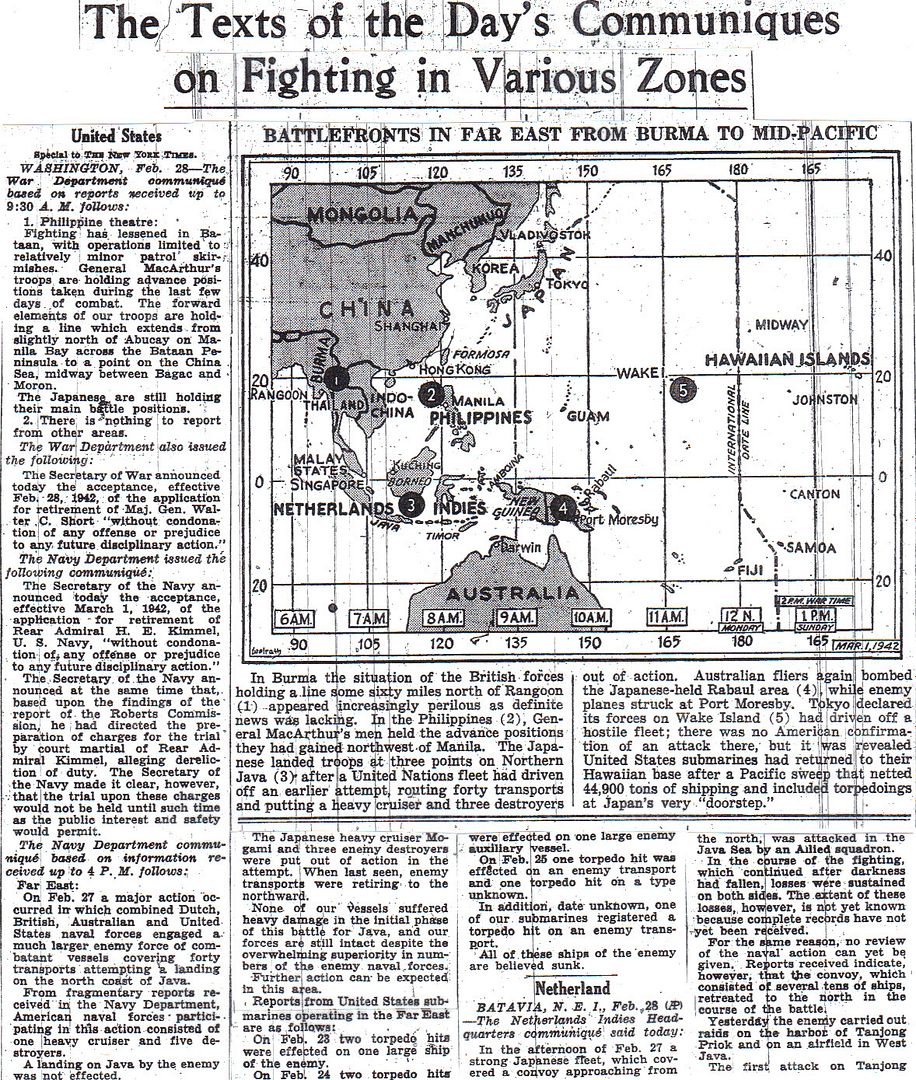
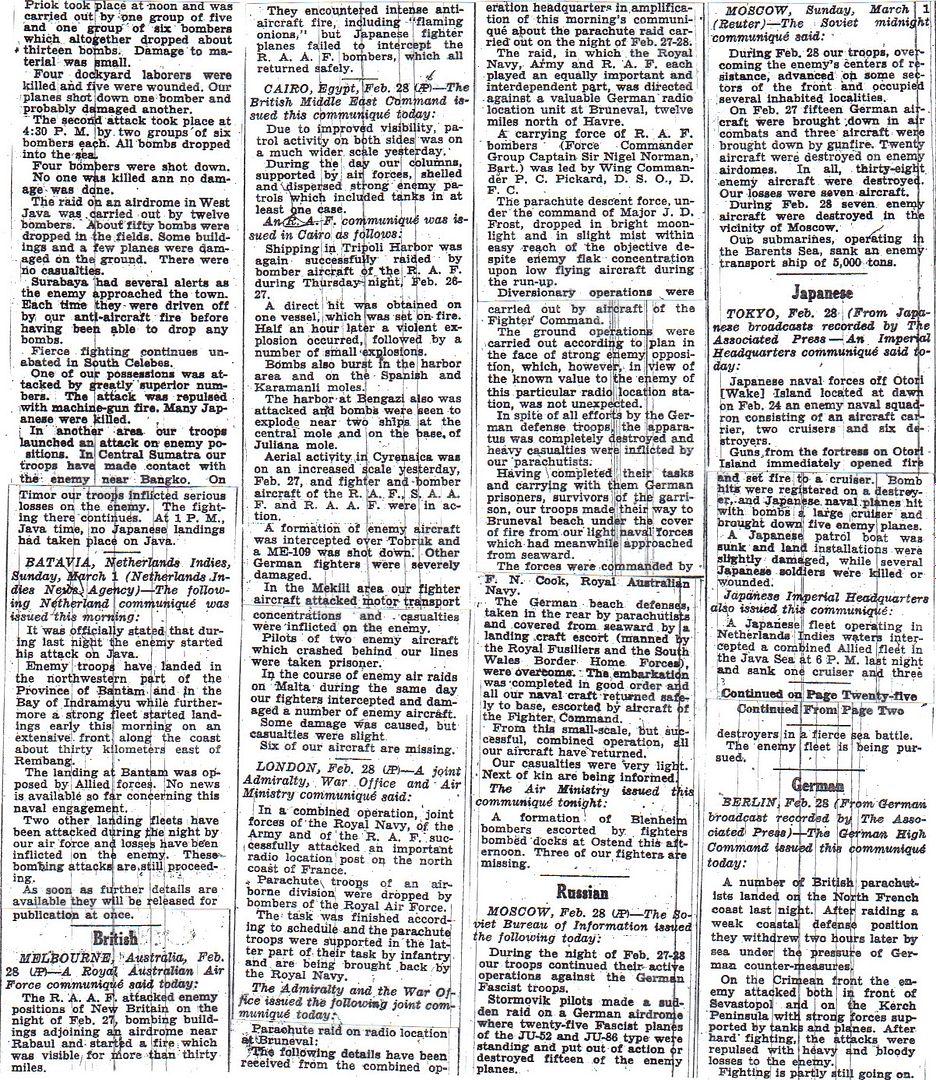
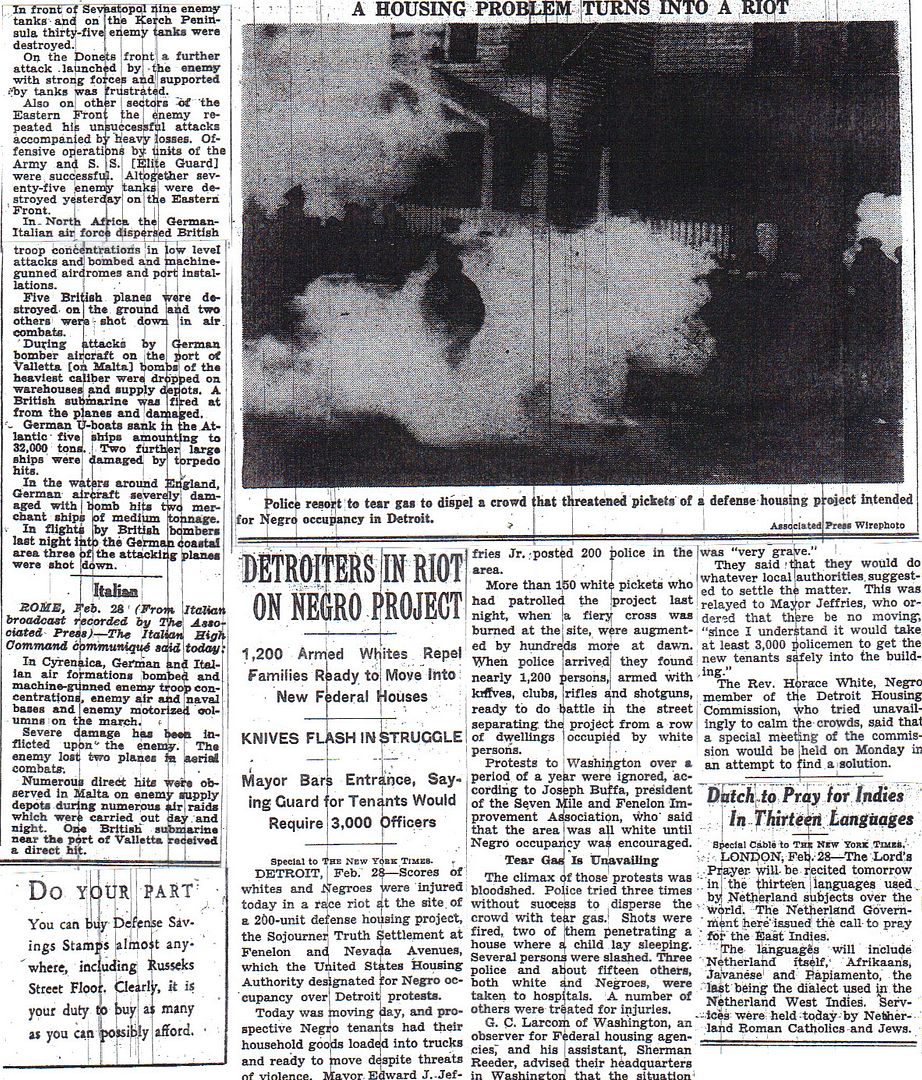
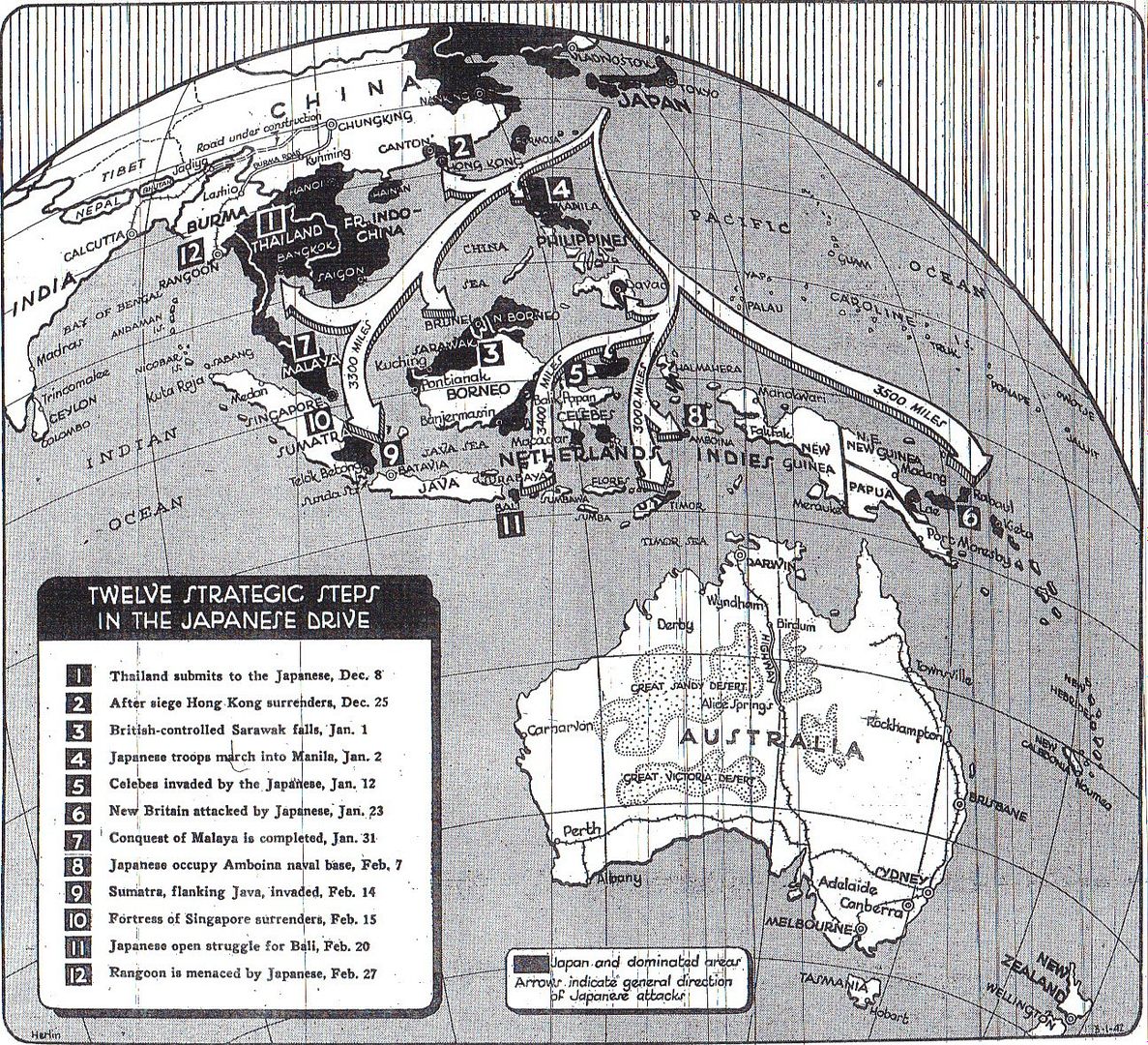

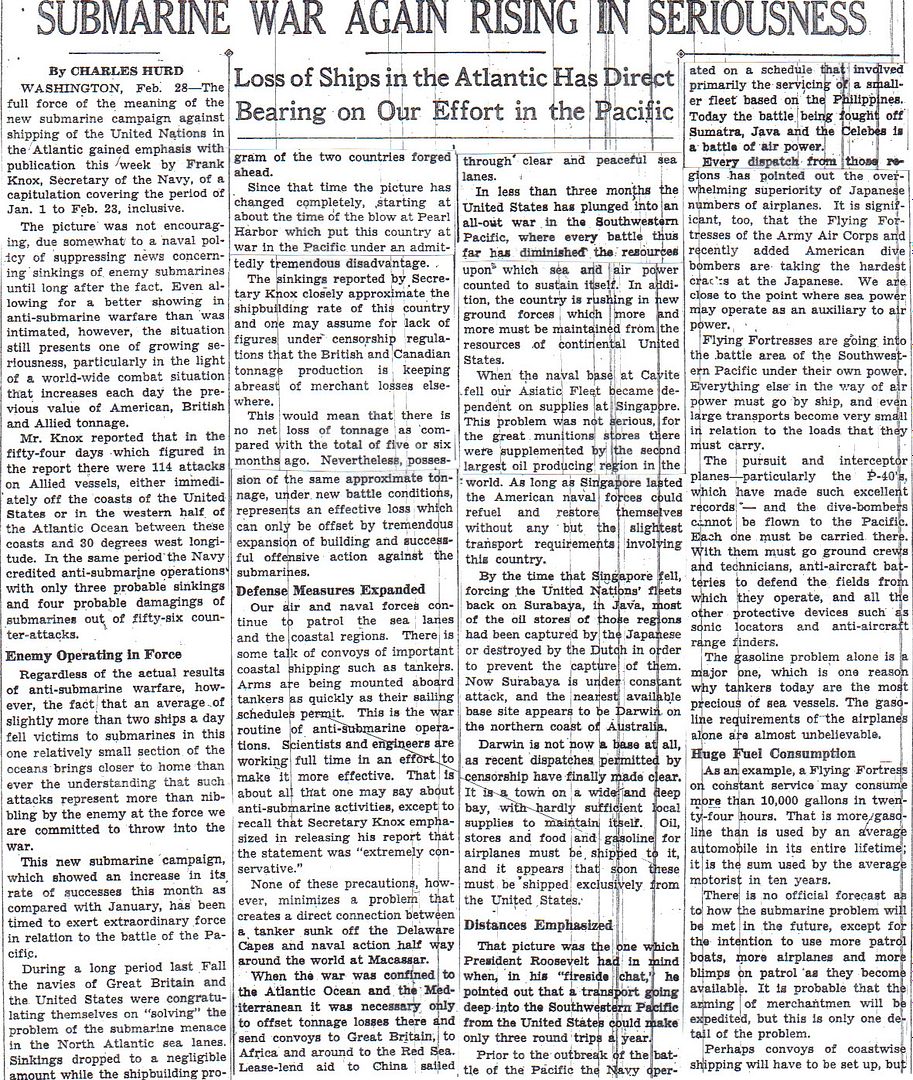

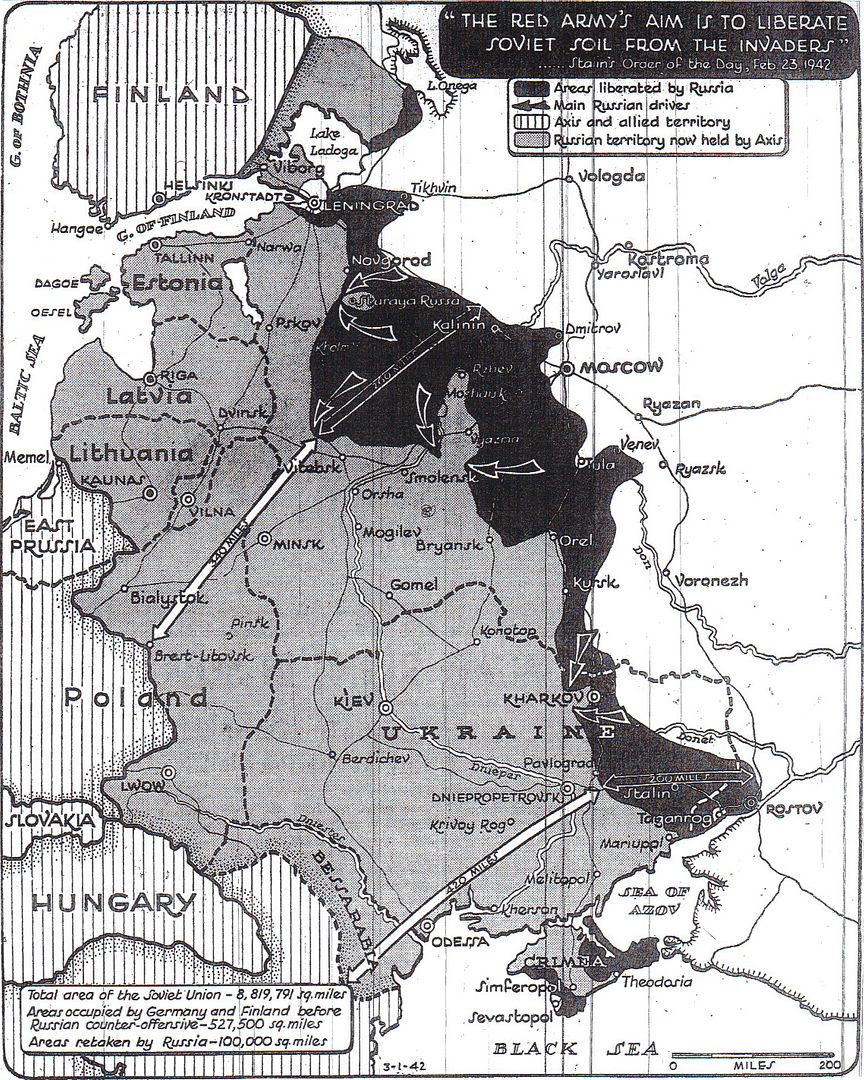
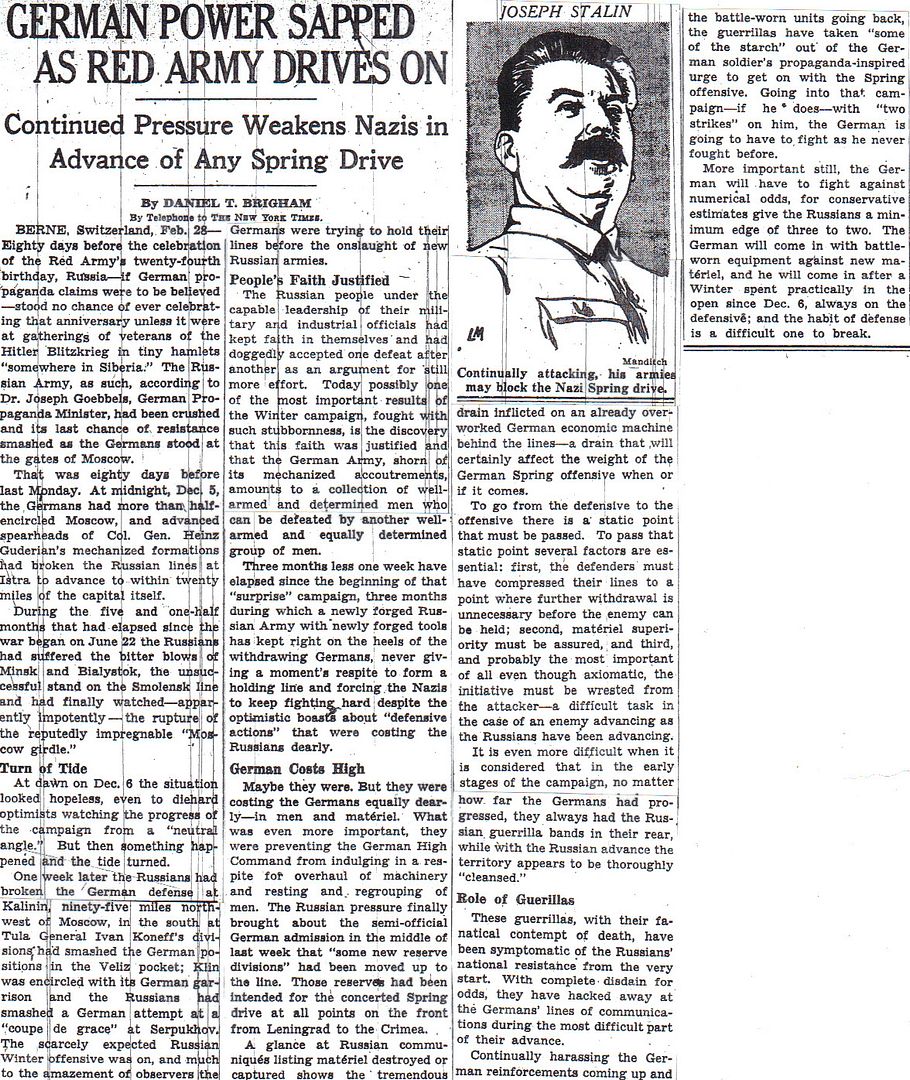

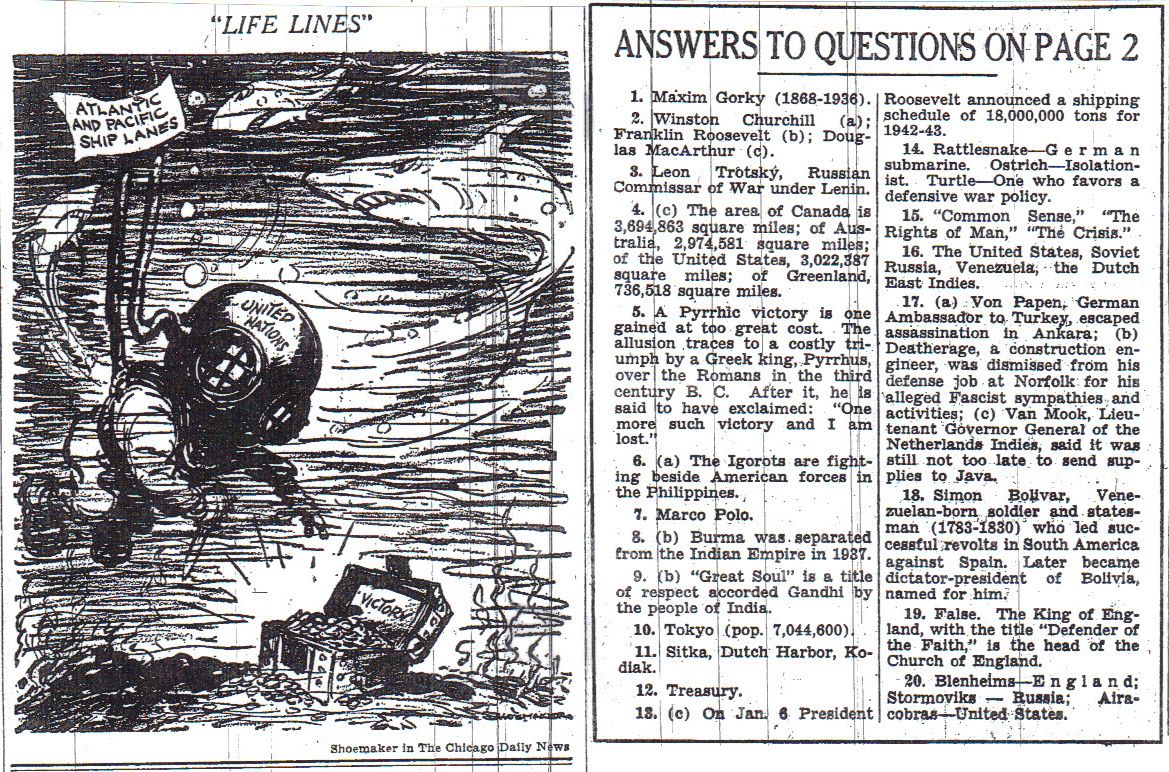
Foe on Indies Isle (Peters) – 2-3
Nazi Post is Seized (Post) – 3-4
The War Summarized – 4
Kimmel and Short will Stand Trial; Date is Undecided – 5
Nazi Planes Fail to Break Red Trap – 5
Extinction Feared by Jews in Poland – 6
Pearl Harbor Raid as Seen by a Nun – 7
The Texts of the Day’s Communiques on Fighting in Various Zones – 9-11
Detroiters in Riot on Negro Project – 11
The News of the Week in Review
Twelve Strategic Steps in the Japanese Drive (map) – 12
Twenty News Questions – 13
Submarine War Again Rising in Seriousness (Hurd) – 14-15
“The Red Army’s Aim is to Liberate Soviet Soil from the Invaders” (map) – 16
German Power is Sapped as Red Army Drives On (Brigham) – 17
Japan Holds Up Her End of Axis (by Henry C. Wolfe, first time contributor) – 18
Answers to Twenty News Questions – 19
I thank you for posting these every day. We had an enemy. We named it. We knew it. And we fought it. Now, we can’t even identify it by name because our cic is one of them. The world has changed and our enemy lives in OUR house.
http://www.onwar.com/chrono/1942/mar42/f01mar42.htm
Allied forces on move in Burma
Sunday, March 1, 1942 www.onwar.com
The “Flying Tigers”In Burma... The Chinese 5th Army moves into position at Toungoo on the Sittang River, 150 miles from Rangoon. The “Flying Tigers” volunteer air force under the command of Chennault’s move to the RAF bomber base after their exceptional air defense of Rangoon.
On the Eastern Front... The Red Army begins a new offensive in the Crimea.
From Germany... General Halder, estimates that German losses in the war with the Soviet Union have reached 1,500,000
In the East Indies... The remainder of Doorman’s naval squadron withdraws from Java fighting rear guard actions in the Sunda Strait. The force loses three cruisers and four destroyers. Japanese forces land with little or no opposition on Java at Kragan, Merak and Eretenwetan.
http://homepage.ntlworld.com/andrew.etherington/frame.htm
March 1st, 1942
GERMANY: U-758 launched. (Dave Shirlaw)
U.S.S.R.: German General Halder issues a staff analysis that German losses in the war with the USSR have already reached 1.5 million.
Soviet forces launch a Crimea offensive.
The Soviet advance comes to a halt during March and the battle line remains about the same throughout month, despite continued fighting on all fronts. The Germans are unable to relieve their isolated II Corps, Sixteenth Army, southeast of Staraya Russa, but succeed in withdrawing the salient southwest of Kaluga. The Germans also contain Soviet attacks on the southern front, which are extended to region east of Kharkov. (Jack McKillop)
Leningrad: The people of Leningrad are in a pitiable condition. More than 100,000 died of starvation last month, and there is no sign of the siege being lifted.
There are fears that their rations will be cut even further with the coming of the spring thaw. With great ingenuity the defenders have laid a light railway across the frozen surface of Lake Ladoga.
Supplies are now coming in by the railway and by truck convoys across the ice from Tiklvin, on the eastern side of the lake, which was recaptured by the Red Army on 8 December after ferocious fighting.
When the ice melts, however, this life-line will disappear and the besieged city will have to relay on small ships running the gauntlet of the Stukas in almost perpetual daylight.
Another worry for the authorities is that when the thaws come thousands of bodies hastily buried in snow drifts - because the ground is frozen too hard to dig graves - will be exposed and bring epidemics to people already suffering from the diseases of malnutrition.
Some 300,000 of the strongest people have been organized into gangs to clean up the city once the ice melts. The Leningraders are determined that their city will come to life again. It must be emphasised that the real heroes of this siege are the ordinary people who, by tremendous courage, are managing to survive an almost impossible ordeal.
BURMA: General Chennault’s “Flying Tigers’ move from Rangoon to Magwe.
The Burma Army’s 1st Division covers the concentration of the Chinese 5th Army in the Toungoo area; the Chinese 200th Division of the army, which is already disposed in this area, regains Nyaunglebin and Pyuntaza, on the Rangoon-Mandalay road. General Archibald Wavell, Commander in Chief India, arrives in Burma and orders Rangoon held as long as possible, at least until reinforcements en route, the British 63d Brigade Group, arrive. The Indian 17th Division returns toward Waw, which is to be defended. (Jack McKillop)
COMMONWEALTH OF THE PHILIPPINES: Of the 8 P-35As of the 34th Pursuit Sqdn transferred to Bataan on Christmas Day only two are left. These will be destroyed before the Allied surrender to the Japanese in April. (Jack McKillop)
The Japanese 14th Army, during the period 6 January to date, has suffered a severe setback on Luzon and sustained almost 7,000 casualties (2,700 killed and over 4,000 wounded). (Jack McKillop)
NETHERLANDS EAST INDIES: The last heavy bomber mission is flown from Java; the air echelons of three B-17 Flying Fortress and an A-24 Dauntless squadron begin a movement back to Australia. Nine of the remaining 13 USAAF P-40s join with six RAAF and four RNAF fighters to attack Japanese landing craft; three P-40s and two pilots are lost. Later, all of the remaining P-40s in Java are destroyed when Japanese fighters strafe Blimbing Airdrome. The air and ground echelons are ordered to return to Australia by any means possible. (Jack McKillop)
Japanese planes bomb Surabaya, Java; destroyer USS Stewart (DD-224), previously damaged on 19 and 20 February 1942, is damaged again, by a bomb. (Jack McKillop)
The Japanese Western Invasion Force completes the landing of the 2nd Division at Bantam Bay, 40 miles (64 kilometres) west of Batavia while the 230th Infantry lands at Eretan Wetan, 120 miles (193 kilometres) to the east. The Eastern Invasion Force lands the 48th Division and the 56th Regimental Group at Kragan, about 80 miles (129 kilometres) west of Surabaya; the 48th begins advancing on Surabaya while the 56th begins moving across country to Tjilatjap, the seaport on the southwest coast of Java. (Jack McKillop)
The Japanese, now in undisputed control of the air and sea, make rapid progress on the ground on Java. Allied planes based on Java are virtually wiped out, many of them on the ground. After a final effort to stall the enemy by air, surviving air personnel begin assembling in Batavia, the last remaining airfield in Java, for withdrawal to Australia. (Jack McKillop)
Battle of the Sundra Strait.
Batavia: HMAS RUTH and the US cruiser HOUSTON, damaged in the Battle of the Java Sea, are sunk while attempting to escape from Batavia.
Shortly after 2300 hours yesterday, the heavy cruiser USS Houston (CA-30), with her No. 3 turret disabled and low on ammunition, and the light cruiser HMAS Perth were heading for the Sunda Strait when they rounded a headland in Banten Bay, Java, where the Japanese Western Invasion Force is landing troops. The two cruisers then engage the Japanese in the Battle of Sunda Strait. The cruisers are almost torpedoed as they approach the bay, but evade the nine torpedoes launched by destroyer HIJMS Fubuki. The two cruisers then sink one transport and force three others to beach. A destroyer squadron blocks Sunda Strait, their means of retreat, and large light cruisers HIJMS Mogami and Mikuma stand dangerously near. (Mogami and Mikuma were armed with 10x 8 inch guns during WWII, so they were “heavy” cruisers, although they were built with 15x 6 inch guns, so they were “large light” cruisers as US Brooklyn class.)
HMAS Perth sinks at 0025 hours from gunfire and torpedo hits; USS Houston faces the same fate at about 0045 hours. Of HMAS Perth’s complement of 680 men, 352 were killed and about 320 were captured by the Japanese and 105 of these died as POWs. 218 survive the war. The fate of these two ships was not known by the world for almost nine months, and the full story of her courageous fight was not fully told until after the war was over and her survivors were liberated from prison camps. An hour or two later the Dutch destroyer HNMS Evertsen, which was to have accompanied the HMAS Perth and USS Houston but had been delayed, ran into two enemy destroyers and, after a brief encounter, beached herself in a sinking condition on Sabuko Island off the coast of Sumatra. (Jack McKillop & Massimiliano Stola)
One of Houston’s shells damages Mikuma along with a Japanese destroyer. CO Captain Rooks receives the MOH for this action.
The USS Parrott (DD-218) escorts the SS Seawitch into Tjilatiap, in the Dutch East Indies. (Ron Babuka)
Near Christmas Island, the USS Whipple (DD-217) with the USS Edsel (DD-219) begin transferring USS Langley crew members [rescued 2 days before] to the oiler USS Pecos (AO-6), and completing the task by 0800. While one destroyer transferred personnel, the other circled and maintained an antisubmarine screen. When the job of transferring survivors from the lost seaplane tender had been completed, the two destroyers parted company with the oiler.
The Japanese Navy is also patrolling south of Java and sinks the destroyer USS Edsall (DD-219) and oiler USS Pecos (AO-6). USS Edsall (DD-219) is en route from Christmas Island in the Indian Ocean to Tjilatjap, Java, after transferring 177 survivors of the seaplane tender USS Langley (AV-3) to USS Pecos. Edsall is sunk by gunfire of battleships HIJMS Hiei and Kirishima, heavy cruisers HIJMS Tone and Chikuma, and planes from carriers HIJMS Akagi and Soryu; the amount of main battery shells expended in the attempt to sink the U.S. ship amounts to 297 15-inch (38,1 cm) and 844 eight-inch (20,32 cm). Edsall’s five enlisted survivors are subsequently executed at Kendari on Celebes Island. Oiler USS Pecos, with USS Langley survivors on board as well as evacuees from Java, is bombed and sunk by carrier-based bombers from HIJMS Akagi, Kaga, Hiryu, and Soryu, 250 miles south-southeast of Christmas Island in the Indian Ocean. (Jack McKillop)
Changing course in anticipation of orders to retire from Java, Whipple prepared to send a message relative to these orders when the destroyer’s chief radioman heard a cell for help over the radio from Pecos, then under attack by Japanese bombers near Christmas Island. Whipple sped to the scene to render assistance if possible.
Throughout the afternoon, as the destroyer closed the oiler, all hands on board prepared knotted lines and cargo nets for use in picking up survivors. Whipple went to general quarters at 1922 when she sighted several small lights off both bows. Whipple slowly closed and began picking up survivors of Pecos. After interrupting the proceedings to conduct an unsuccessful attack on a submarine lurking in the area, she returned to the task and continued the search until she had received 231 men from the oiler. (Ron Babuka)
Batavia: The other survivors of the Battle of the Java Sea, the heavy cruiser HMS Exeter having refueled and carried out emergency repairs to her boiler rooms at Surabaja, leaves harbor on the evening of 28 February in company with the destroyer HMS Encounter and USS Pope (DD-225); the ships have been ordered to Colombo, Ceylon, via the Sunda Strait. The ships are spotted by Japanese aircraft and at about 1000 hours, they encounter the Japanese heavy cruisers HIJMS Myoko, Ashigara, Haguro and Nachi plus four escorting destroyers. HMS Encounter is sunk first and after 90 minutes, a torpedo from a Japanese destroyers sinks HMS Exeter. USS Pope escapes the cruisers but is located and bombed by floatplanes from seaplane carriers HIJMS Chitose and Mizuho. Damaged by one close-miss, USS Pope is then located by carrier-based aircraft from HIJMS Ryujo and attacked by 12 aircraft shortly before 1200 hours; scuttling is in progress when the cruisers HIJMS Myoko and Ashigara deliver the coup de grace with gunfire and USS Pope sinks about 250 miles north-northwest of Surabaja. (Jack McKillop)
IJN cruisers Nachi and Haguro account for Exeter with Mogami and Mikuma credited with PERTH and Evertsen. IJN cruisers Myoko and Ashigara sink ENCOUNTER and USS POPE. There are 307 survivors from PERTH and 300 from EXETER, who are rescued by the Japanese. The USS POPE gets away only to be sunk by Japanese aircraft an hour later. (Alex Gordon)(108)
South of Java: EDSALL, USS, US Destroyer; sunk by 14in gunfire from the Japanese battleships Hiei and Kirishima. Some crew may have survived the sinking but none survived the war.
PILLSBURY, USS, US Destroyer; sunk by Japanese cruisers lost with all hands.
(James Paterson)
HMS EXETER faced two enemy cruisers off the port quarter and two on the starboard beam. With all power lost after yesterdays’ encounter, she sank soon after coming under fire. Her captain and 651 of the crew survived.
Concerned with the Japanese naval success, and the possibility of the Japanese establishing a base on Madagascar, Churchill today informs Roosevelt of the British intention to take Diego Suarez, Madagascar’s main harbour.
PALMYRA ISLAND: The US Marine detachment on the atoll is reorganised as the 1st defence Battalion as it’s Wake Island detachment has been lost and the Johnston detachment has been reorganised as a separate defence force. (Gordon Rottman)
AUSTRALIA: Japanese submarine HIJMS I-25 launches a Yokosuka E14Y1, Navy Type 0 Small Reconnaissance Seaplane (later assigned Allied Code Name “Glen”) to reconnoitre Hobart, Tasmania. (Jack McKillop)
CANADA: The Canadian Women’s Army Corps is granted full Army status as “a Corps of the Active Militia of Canada.” (Jack McKillop)
HM MTB 333, 334 and 335 commissioned. (Dave Shirlaw)
U.S.A.: The owners of the major league baseball clubs consider the question of whether players in the military can play for the clubs if they are on furlough or based near a game site? The owners decide against it. (Jack McKillop)
ATLANTIC OCEAN: U-656 (Type VIIC) is sunk in the North Atlantic about 35 miles south of Cape Race, position 46.15N, 53.15W, by depth charges from an American Hudson aircraft (VP 82). 45 dead (all hands lost). The Hudson PBO-1 aircraft was from a US Navy patrol squadron (VP-82) based at NAS Argentia, Newfoundland, that was flying support for convoy ON.72. This is the first U-boat sunk by US Navy forces during World War II. The Hudson PBO-1 was one of 20 Lend-Lease Hudson IIIA’s used by the USN to equip one squadron. These aircraft sank the first 2 U-boats sunk by the USN, U-656 on 1 March, 1942 and U-503 on 15 March. (Alex Gordon and Jack McKillop)
RFA Finnanger had been in the convoy ONS-67 but had lost contact after the heavy U-boat attacks on 24 February and was last seen by the Norwegian motor tanker Belinda two days later about 300 miles south of Cape Race. She carried a crew of 36 Norwegian and four British. At 1133 on 1 March, U-158 attacked an unescorted tanker and observed two hits. The tanker fired on the U-boat but was sunk by gunfire after 4 hours 45 minutes. This must have been the Finnanger.
At 0200, SS Carperby, dispersed from Convoy ON-66, was torpedoed and sunk by U-588 about 420 miles south of Newfoundland. The master and 39 crewmembers were lost. (Dave Shirlaw)
http://en.wikipedia.org/wiki/HMS_Exeter_%2868%29
HMS Exeter (68) was a York class heavy cruiser of the Royal Navy that served in World War II. She was laid down on 1 August 1928 at the Devonport Dockyard, Plymouth, Devon. She was launched on 18 July 1929 and completed on 27 July 1931. She fought against the German pocket battleship Graf Spee at the 1939 Battle of the River Plate, suffering extensive damage that caused a long refit. Having been rebuilt, she was sent to the East Indies where she was sunk by the Japanese in 1942.
http://en.wikipedia.org/wiki/Second_Battle_of_the_Java_Sea
The Second Battle of the Java Sea was the last naval action of the Netherlands East Indies campaign, of 1941–1942. It occurred on 1 March 1942, two days after the first Battle of the Java Sea. It saw the end of the last Allied warships operating in the waters around Java, allowing Japanese forces to complete their conquest of the Netherlands East Indies unhindered.
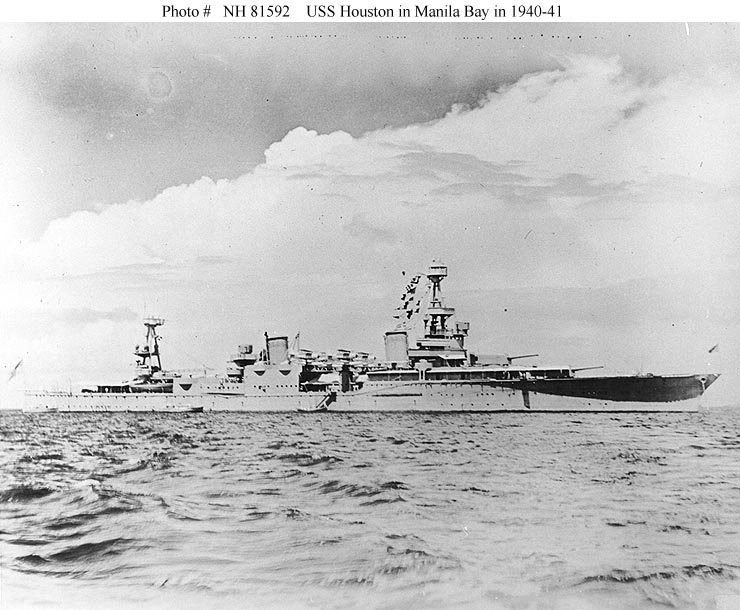
"Inmates at the Mauthausen concentration camp in Austria haul cartloads of dirt and stones for the construction of the "Russian Camp."
Located outside the main prison camp, the Russian Camp housed Soviet POWs.
The conditions within this installation were particularly harsh.
The Russian camp had its own perimeter of barbed wire, and the inmates lived in rude huts close to Mauthausen's notorious rock quarry.
A convenient thoroughfare connected the Russian camp to the main-camp gas chamber, morgue, and crematorium.
Nazi guards were particularly harsh to Soviet noncommissioned officers who had escaped from other camps and been recaptured.
Of the 5000 Soviet POWs who arrived in the first shipment in 1941, only about 80 were still living in March 1942."

On an unrelated note I downloaded “World of Tanks” (a big download BTW) and it is actually pretty good.
"By 1944, the Allies were clearly winning, and national security would no longer wash as a barrier to trials.
A congressional act mandated the court-martials.
At last, the former Hawaiian commanders would have their day in court."In August [1944], the Naval Court of Inquiry opened.
A source inside the Navy Department had already tipped Kimmel and his attorneys about the scores of Magic intercepts kept from the admiral in 1941.
One of the attorneys, a former Navy captain, managed to get at the Department's files, and authenticated the existence of many.
Obtaining their release was another matter.
Obstruction after obstruction appeared — until Kimmel tried a ploy.
Walking out of the courtroom, he bellowed to his lawyer that they would have to tell the press that important evidence was being withheld."By the next day, the requested intercepts had been delivered — 43 in all.
The admirals on the Court listened to them being read with looks of horror and disbelief.
Two of the admirals flung their pencils down.
More than 2,000 died at Pearl Harbor because those messages had been withheld.
Navy Department officers gave additional testimony.
After nearly three months, the inquiry finished.
The verdict of the Roberts Commission was overturned.
Admiral Kimmel was exonerated on all charges.
Admiral Stark — who had rejected pleas of juniors to notify Hawaii on the morning of the attack — was severely censured."News of the intercepts leaked to the Army Pearl Harbor Board, convening at the same time.
The Board secured copies of Magic from War Department files.
The Board's conclusions still expressed modest criticism of General Short, but found overwhelming guilt in General Marshall and his Chief of War Plans, General Gerow.
Its report ended with this statement:"Up to the morning of December 7, 1941, everything that the Japanese were planning to do was known to the United States except [Tokyo's final diplomatic message] the very hour and minute when bombs were falling on Pearl Harbor." "
There is much more to the story, but this is a start...
This article says nothing about mass shootings or gas chambers, but does clearly indicate the scale of threat facing Poland's 3,000,000 Jews.
There are known instances of non-survival based cannibalism by Japanese forces.
I read it as purely figurative. The cannibals are the Axis, missionaries are allies
"Up to the morning of December 7, 1941, everything that the Japanese were planning to do was known to the United States except [Tokyo's final diplomatic message] the very hour and minute when bombs were falling on Pearl Harbor."
I don't know where to start on your John Birch Society article. Washington, DC and Kimmel and Short all knew that war was imminent on December 7. Nothing in Magic identified Pearl Harbor as a main target on December 7.
I noticed that too. I felt a since of irony in the statement that the ghettos were worse than the POW camps. Again though, it may just be too soon for this word to have leaked out. But the more these reports come, the more I think it will leak sooner rather than later.
At first glance, that too was my impression but then I recalled reports of non-survival cannibalism by the Japanese. This then made me wonder if the British officer may have heard such reports coming from China and his choice of words was not entirely figurative?
In 1942 when the supply situation for the Japanese was still good, Australians began encountering evidence of cannibalism by Japanese troops in New Guinea. http://www.pacificwar.org.au/JapWarCrimes/TenWarCrimes/Murder_Cannibalism_Kokoda.html
That the Japanese in the Philippines were cruel is a fact but as Japanese troops began to be withdrawn from New Guinea to the Philippines later in the war, Filipino guerrillas reported that the Japanese from New Guinea were exceptionally savage.
Yet, as the camps are liberated in 1945, the mover's and shaker's will express shock and say they had no idea.
Disclaimer: Opinions posted on Free Republic are those of the individual posters and do not necessarily represent the opinion of Free Republic or its management. All materials posted herein are protected by copyright law and the exemption for fair use of copyrighted works.